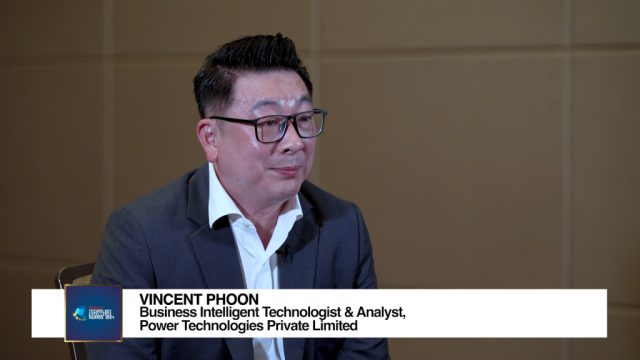What Singapore companies need to know about workplace learning
By Lee Kang YamDespite more training days, Singapore’s productivity growth has not improved. Over the past decade, Singapore’s economy grew by an average of 5% per annum, compared to paltry productivity growth of 1% over the same period.
This is due to heavier reliance on labour inputs to generate economic growth, especially foreign manpower. Investments in learning and development have focused on industry competencies and generic skills, which are taught in training workshops outside the workplace.
Training days have increased over the years to 7.6 days in 2013 (source: Ministry of Manpower). However, overall productivity growth was flat in 2013.
Clearly sending workers to formal training has reached its limits. Companies bemoan the loss in productivity when workers are away while the transfer of learning back to the workplace remains questionable.
Here's an alternative. Companies need to explore the workplace itself as a source of learning. According to the 70|20|10 model of learning proposed by Michael M. Lombardo and Robert W. Eichinger, 70% of our learning comes from working on-the-job or from our experiences at the workplace, 20% of our learning comes from observing, being coached and mentored by others while 10% of our learning comes from attending classes or formal learning programmes.
Learning moments occur every day at the workplace. For example, a co-worker may speak harshly to customers but is not aware of his impact on them and the business. That’s a good learning moment to give feedback.
Another co-worker demonstrated thoughtfulness and went the extra mile to help another colleague. This is also a learning moment to share with other colleagues.
Learning and working cannot be separated. Our thinking that learning occurs best outside the workplace needs a rethink, given the statistics on training and how people learn. The focus should be on maximising the 70% of the learning at the workplace. So, what is workplace learning?
When a frontline worker figures out how best to manage an angry customer, learning occurs. When a worker prioritises and uses his resources in an optimal way, learning occurs.
So where is the magic, the “ah-ha” moment? Well, there is no magic bullet, workers do not simply learn to perform better by attending a motivational talk, and it is not sustainable.
So how can we make workplace learning more explicit and sustainable? I have three letters to share - ABC. A is for Affordances. Consider the conditions or opportunities in the workplace that encourage people to learn.
When workers interact with each other in the work activities, more learning opportunities occur. Learning is social whereas extreme specialisation of tasks reduces the social learning opportunities.
While productivity of the task may go up, it comes at great psychological and learning costs – recall the unfortunate cases of some of the workers operating in Foxconn factories. When workers feel trusted and not judged, they are motivated to share their learning experiences and practices.
As such, make good use of short 10-minute meetings at the start of the day to conduct learning circles. Ask your workers what they have learned the previous workday. This is not to penalise anyone but to learn from one another.
B is for Being. Consider the state of being of the worker. Learning is also personal and subject to the aspirations, beliefs, values, and experience of the person. Understand how best the person learns.
Let me share a personal example: I was coaching my son for his primary 1 spelling test and he just could not spell the word “remorseful”. I tried the traditional method of visual and audio memorisation where he wrote and sounded out the word five times and when that did not work, I increased it to ten times. However, that did not work either.
So do I increase it to twenty times? I tried a different approach. I asked him to break the word into three parts, re-morse-ful. He knew how to write the first and the last parts but got confused with the middle part. So I asked him to think about the word “horse” which he knew and substitute it with the letter “m”. He immediately got it and subsequently used the same method to coach his brother for this word.
By using a different method, he learnt much better, to my relief. So understand how your people learn, a one-size-fits-all learning approach may not work.
C is for curriculum. Workers learn best when there is a serious thought into the design of workplace learning according to sound curriculum design principles and concepts. Principles such as scaffolding and sequencing are of particular importance to workplace learning.
For example, an aspiring chef or cook might start off by just washing, cleaning, and chopping vegetables and meat. They might resent this type of work as “time wasting” and want to learn the “real” stuff.
However, this sequence of work activity allows them to learn to handle the raw materials, get a feel and understand the texture, colour, freshness, density, etc., which then goes into the dishes they will create.
However, supervising chefs often do not take the time to explain this learning moment and thus the aspiring chefs feel they are being taken advantage of.
The practices of some mentors and coaches also do not encourage effective workplace learning. Take the example of a typical Chinese restaurant, where the master chef may guard their “tricks of the trade” fiercely and the apprentice needs to do all he can to “steal” his master’s secrets. The master and apprentice might possess certain learning assumptions which may actually hinder effective transfer of learning.
While workplace learning is happening every day in your organisation, more thought needs to be invested to make it work. Learning and working is part of the same activity. The traditional demarcation of the Training and Development function as a “support” department is not helpful.
All managers must see themselves as “learning” managers while the Training and Development manager must advise them on the appropriate workplace learning strategies and methods. Learning and working will then be truly inseparable.

























 Advertise
Advertise









